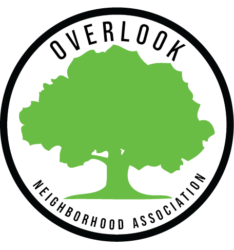The Overlook Neighborhood Association invites Portlanders to help preserve neighborhood centers . About three dozen neighborhoods have a main street to which the new Centers Main Street Overlay Zone applies (map). If enforced, the main street overlay (m-overlay) promises to foster active community town centers.
Unfortunately, city planners are not enforcing one of the key requirements of the m-overlay – that at least 25 percent of their ground floor of projects be active use such as commercial, office and others that encourage human traffic. A project on N Interstate Avenue in Overlook is one of the first to proposed under the m-overlay. Planners granted it an exception to the active use requirement, but they also encouraged the neighborhood to appeal so that the Design Commission could provide clarity on how firmly to enforce the code. We have done so.
The Design Commission will hold a hearing on Thursday, June 20 to hear our appeal and decide if city planners should require the full amount of active use. This case will set the precedent for how the m-overlay is applied citywide, including in your neighborhood. If exceptions are easily granted, developers will pursue them in order to maximize profitable residential space.
If you agree that enforcing the Centers Main Street Overlay Zone is important for the quality and predictability of development, we hope you will provide written or oral testimony to the commission.
You can send you testimony before June 20 to Benjamin.Nielsen@
OKNA continues to prepare its appeal, but our original objection to granting the exception is available.
This is our chance as neighborhoods to tell developers and the city that we expect active, community-focused development in our town centers and on our main streets.
About the Centers Main Street Overlay Zone
Council created the m-overlay in 2018 as part of a larger zoning code update. Commissioners and planners recognized that on certain core neighborhood streets developers should be required to design projects that encourage active use. The purpose statement of the m-overlay zone reads:
The Centers Main Street overlay zone encourages a mix of commercial, residential and employment uses on the key main streets within town centers and neighborhood centers identified in the Comprehensive Plan. The regulations are intended to encourage a continuous area of shops and services, create a safe and pleasant pedestrian environment, minimize conflicts between vehicles and pedestrians, support hubs of community activity, and foster a dense, urban environment with development intensities that are supportive of transit.
In the case that Overlook has appealed, the developer wants to include less active use in order to fit more residential units on the ground floor. Planners allowed a reduction of the active use requirement from 25 percent to 20 percent. The developer originally had sought 14 percent. This is still several hundred square feet short, enough to be the difference for the feasibility of many potential active uses. The land use decision is available here.
Like the Overlook Neighborhood, you probably want to see active use prioritized in your neighborhood town centers. Main streets that enable residents and visitors to walk and interact make for a more livable, vibrant environment for everyone. We believe the code is clear that 25 percent is a minimum. Ideally, developers would even exceed this to better meet the goals of the code.
Thank you for considering our request and for all your work to make your neighborhood a vibrant, community-oriented place to live and do business.
